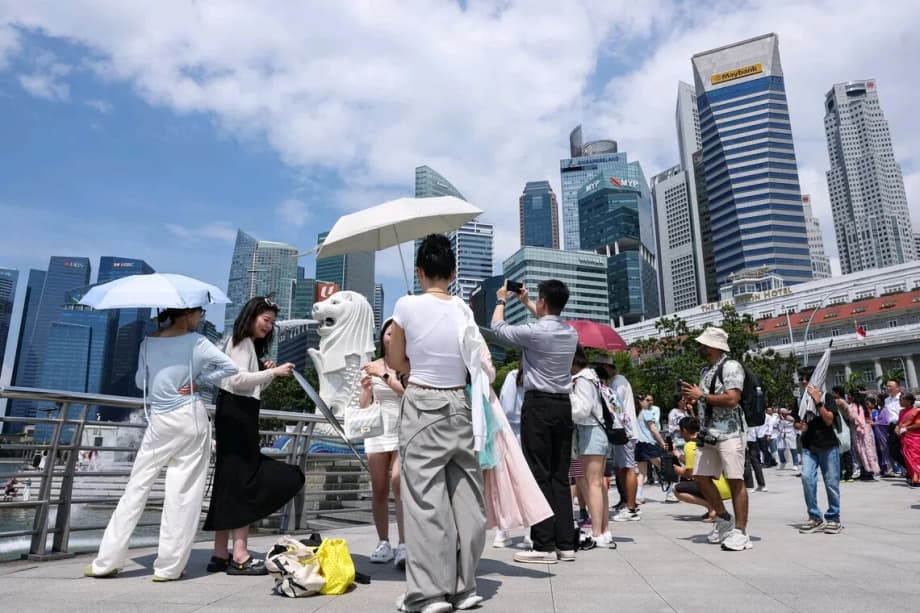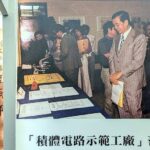A surge in arrivals meets mixed reviews
Chinese travelers are back in Singapore in large numbers, and their verdict is anything but uniform. On Xiaohongshu, the app that blends photo sharing with travel guides for a young, mobile audience, glossy shots of Jewel Changi Airport and Marina Bay sit alongside candid posts that call the city hot, boring, or expensive. The split screen captures a real tension. The draw of a safe, efficient, modern city is clear. So are frustrations about cost, climate, and what to do after the top sights.
- A surge in arrivals meets mixed reviews
- What Chinese travelers love about Singapore
- Why some call it hot, boring, expensive
- Inside the Xiaohongshu effect
- What the data says about who is visiting and how they spend
- How Singapore is recalibrating the visitor experience
- Practical tips for Chinese visitors
- The Bottom Line
The rebound helps explain the volume and the noise. Singapore welcomed about 16.5 million international visitors in 2024, and travelers from mainland China were the largest group at roughly 3.08 million, equal to about 18.7 percent of arrivals. That was a strong year-on-year jump. Bookings from China surged during the Lunar New Year period after the two countries began mutual visa exemption in February. A major travel platform reported a 960 percent year-on-year spike in Singapore bookings around Spring Festival. The return is still uneven compared with 2019, but it has put Singapore back on the map for Chinese holidaymakers and business travelers.
Who is coming has shifted as well. Many visitors are from the 1980s and 1990s generations, and women have been a majority among Chinese leisure travelers to Singapore. Younger travelers share and plan on social platforms, while older travelers are joining in greater numbers. That mix amplifies the conversation online. In this guide, we break down what Chinese tourists praise, what disappoints them, how social media is shaping itineraries, and what could improve the experience on both sides.
What Chinese travelers love about Singapore
Safety, order, greenery, and a picture-perfect skyline are the city’s postcard strengths. For many Chinese visitors, Singapore is an easy first international trip in Southeast Asia. English is widely used, Chinese is common too, transport is simple to navigate, and neighborhoods feel well maintained. Iconic stops such as Gardens by the Bay, Marina Bay Sands, the Merlion, and Sentosa deliver the views that slam onto Xiaohongshu feeds. Jewel’s indoor waterfall greets visitors the moment they land.
Safety often leads the list of compliments. A popular Xiaohongshu post by a Chinese traveler marveled at how a smartphone could be left unattended in a crowded fast-food outlet without being taken. She wanted to capture what felt different about daily life in the city.
Introducing the Xiaohongshu user, who posted her observation during a recent trip to Singapore, highlighting what she saw as a cultural norm around security and trust. She wrote:
“This is Singapore. The owner of the phone is nowhere in sight, but their phone is still here.”
Singapore’s low crime rate, strict penalties for theft, and dense CCTV coverage reinforce that sense of safety. For families, this creates a peace of mind that is hard to quantify. It also links to practical habits that surprise visitors, such as using a wallet or tissue packet to reserve a hawker center table. For a traveler who wants stress-free logistics in a big city, the rules and their enforcement can feel reassuring.
Convenience, visas and planning habits
Visa rules matter, and the new policy is a clear tailwind. Since early February, Chinese nationals can visit Singapore visa free for up to 30 days. Searches and bookings jumped after the policy announcement, and that helped fuel the spring travel surge. It also nudged more spontaneous trips. Data from a major online agency shows that many Chinese visitors now book flights and hotels just days to a couple of weeks out, and buy attraction tickets close to the visit date. The pattern fits the social media era, where a viral post can trigger a near-term getaway.
On the ground, wayfinding is straightforward, payments are increasingly cashless, and mobile wallets popular in China are accepted at many merchants. The MRT connects most visitor corridors, and ride hailing fills the gaps late at night. Hotels range from budget to luxury tower icons, and newer nature and heritage experiences, such as walking trails and waterfront parks, are easy to add to an itinerary.
Family and education draw
Alongside leisure, education is a strong point of interest. Singapore’s universities rank high in Asia, and families who have teenagers often add campus visits to their plans. Some tour providers include stops at the two flagship universities. While that flow has sparked occasional complaints from students about disruptions, it shows how education and lifestyle polish are part of Singapore’s brand for Chinese parents. Visitors who plan campus time should check public tour policies, stick to visitor zones, and avoid entering classes uninvited.
Why some call it hot, boring, expensive
Three themes appear again and again on Xiaohongshu and Douyin when a trip to Singapore disappoints. The first is the climate. The second is value for money. The third is the sense that there is less to do after one or two days of headline attractions. These critiques are not universal, yet they recur often enough to shape how some Chinese travelers rate the city.
Heat and humidity
Singapore sits almost on the equator. Daytime heat and humidity can drain energy, especially for visitors used to drier seasons in northern China. Long outdoor walks through Little India, Kampong Glam, Chinatown, Gardens by the Bay, and along the Marina can feel heavy after midday. Travelers who fare best schedule outdoor time early or late, book indoor attractions in the hottest hours, hydrate, and rely on shaded routes. Night programs, from light shows to river cruises and hawker suppers, help beat the sun while still delivering a sense of place.
Cost and value debates
Price comments are direct. Hotel rooms can be pricey in peak periods, attraction tickets add up for families, and a casual meal costs more than in many regional cities. Food quality is the flashpoint that triggers the most discussion. One Xiaohongshu food reviewer from China went viral with a blunt verdict. She showed photos of popular local dishes and complained about both flavor and value.
Introducing the food reviewer, a Chinese content creator who documented her meals at well known establishments and hawker stalls, then told followers what she thought. Her conclusion was unambiguous:
“Expensive and tasted bad.”
Her view was far from universal. Plenty of Chinese visitors praise Singapore’s hawker culture and its mix of Chinese, Malay, Indian, and Peranakan flavors. The split shows how expectations, venue choice, and crowd levels can shape a meal. Visitors who follow only viral lists may hit touristy lines and peak prices. Locals tend to steer toward neighborhood centers at off-peak hours, and they often mix a few famous names with lesser-known favorites.
Small size, limited novelty for repeaters
Singapore is compact. Many first-time visitors can cover the top highlights in two or three days. For travelers who try to repeat the same list on a second visit, the city can feel thin. The solution is not to chase more of the same, but to change the frame. That might mean spending an afternoon in Joo Chiat shophouses, cycling the East Coast park network, exploring Pulau Ubin’s rustic trails, sailing to the Southern Islands, or taking a heritage walk that explains migrant histories. A deeper list of options exists, though they demand more planning than a hit list of photogenic stops.
Transit noise and expectations mismatch
Chinese netizens also trade views about Singapore’s public transport etiquette. Compared with big city metros in China, some find the MRT noisier, with more conversation and excited children during holiday periods. One Xiaohongshu user captured the feeling after filming a crowded cabin during peak festival season.
Introducing the Xiaohongshu poster, who recorded a packed train carriage and contrasted it with expectations formed by metro rides elsewhere. His take was concise:
“The MRT is genuinely noisy.”
Many commuters would say that was a busy day and a normal level of chatter. Singapore has reminders about keeping voices down on trains, and commuters are usually tolerant. For visitors, it helps to calibrate expectations, avoid peak hour crowding, and remember that a holiday week will feel different from a weekday morning.
Inside the Xiaohongshu effect
Xiaohongshu now functions as a travel search engine for millions of Chinese users. Its posts blend aspirational visuals, short captions, and practical maps, which can compress a destination into a handful of must-shoot angles and cafe stops. For Singapore, that means Jewel’s rain vortex, the Merlion, Haji Lane murals, and the Sultan Mosque arch repeat across feeds. The platform’s power cuts both ways. It inspires trips and helps with navigation. It also raises expectations for curated perfection that reality cannot always match.
That cycle creates crowding at a few photogenic spots and neglects experiences that are less obvious yet more rewarding. A string of similar lists, each with the same ten stops, can make any city feel repetitive. Travelers who scroll beyond the first page or search in Chinese for niche interests often find better value and fewer lines, from neighborhood food courts to parks, galleries, and local music venues.
The marketing response
Local brands have caught on. Restaurants and attractions now seed content on Chinese platforms, partner with key opinion leaders, and encourage user posts to reach travelers before they fly. Campaigns on Xiaohongshu and Meituan Dianping highlight signature dishes, time-limited promotions, and convenient locations near popular routes. The goal is to meet Chinese travelers on the platforms they use most, and to steer them toward places that can deliver on flavor, service, and atmosphere. When done well, this narrows the gap between social media expectations and the experience at the table.
What the data says about who is visiting and how they spend
Chinese visitors to Singapore in 2024 were heavy on the 1980s and 1990s generations, with a fast-growing slice in the 2000s cohort. Women made up a majority of Chinese leisure travelers during the year. Seniors also grew as a segment, reflecting a broader expansion of retirement-age travel in China. That demographic spread shows up in what people do and where they stay.
Hotel demand has skewed toward mid to high end. Four star properties saw outsized growth in both room nights and spending by Chinese travelers. On purpose of travel, leisure accounted for roughly three quarters of visits, while business trips made up the rest. The biggest source regions were Shanghai, Guangdong, and Beijing. For planning, more than two thirds of flight bookings happened at least eight days ahead, but many day tours and attraction tickets were purchased only a day before use. Package deals that bundle flights and hotels remain popular among Chinese travelers to Singapore.
Spending patterns have shifted compared with the pre-pandemic years. Chinese travelers are more price sensitive on services and excursions, and more willing to shop for goods or small treats. That helps explain why retail corridors bounced back, while some attractions and paid experiences have to work harder on pricing and product refreshes. For Singapore, it means packaging value more clearly, and using time slots, bundles, or deeper content to make paid activities feel worth it.
How Singapore is recalibrating the visitor experience
Singapore’s tourism planners talk about building a diversified, high quality, and sustainable portfolio of experiences. The trend already shows up in newer green spaces, upgraded wildlife parks, and precinct-level programming with food, art, and culture. Heritage trails are expanding, and developers are stitching together cycling and walking networks that connect parks and waterfronts. The city has a reputation for spotless malls and dramatic views. It is now pitching depth and nature to sit alongside that polish.
Addressing heat, value, and boredom requires practical steps. Cooling solutions such as shaded rest stops, more water refill points, and later operating hours for outdoor sites can help visitors manage the climate. Clearer value at paid attractions through bundles and off-peak pricing can ease sticker shock. Food guidance matters as well. Steer visitors toward where locals actually eat, explain hawker center etiquette, and spotlight family-run stalls and new generation chefs who are reviving heritage recipes. That can turn a hit-or-miss food day into a highlight.
The city can also encourage depth through curated neighborhood days that mix temples, trades, and food in places like Balestier, Geylang Serai, or Tiong Bahru, and through short nature escapes such as the Southern Ridges. For education tourism, posted campus visitor rules and pre-booked tours reduce friction with students. On the MRT, gentle but clear reminders during holiday peaks can keep noise expectations aligned with commuter comfort.
Practical tips for Chinese visitors
Travelers who adapt their plans to Singapore’s rhythms tend to come away happier. A little preparation stretches budgets and beats the heat without losing the fun.
- Plan outdoor activities early or after 5 pm, and schedule indoor museums, malls, or aquariums at midday.
- Buy multi-attraction passes if you have a long list of paid sites, and check for off-peak or family pricing.
- Eat like a local at neighborhood hawker centers during off-peak hours, and ask stall owners for signature dishes.
- Use the MRT for most trips, but factor in ride hailing at night when connections are sparse.
- Carry a refillable bottle and use public water points to cut spending on drinks.
- For campus visits, check official tour pages and stick to public areas. Do not enter lecture halls without permission.
- Explore beyond the big four. Add a heritage walk, a park connector ride, or a neighborhood cafe crawl.
- Use mobile payments where accepted, but keep a physical card as a backup at smaller stalls.
- Book hotels early in peak months. Location near an MRT line often beats a pricey view.
The Bottom Line
- Chinese arrivals rebounded strongly in 2024, reaching about 3.08 million visitors, the largest share among source markets.
- Visa free travel for up to 30 days since February accelerated bookings, especially around Lunar New Year.
- Safety, order, convenience, and iconic sights power the appeal for first-time visitors and families.
- Heat, perceived high prices, and a short list of headline attractions fuel negative reviews among some travelers.
- Xiaohongshu shapes itineraries and expectations, amplifying both praise and disappointment.
- Many Chinese travelers are from the 1980s and 1990s generations, with women forming a majority of leisure visitors.
- Hotel demand favors mid to high end, and spending has shifted toward goods over services.
- Deeper neighborhood and nature experiences, clearer value at paid sites, and better heat management can lift satisfaction.
- Visitors who plan around climate, eat where locals eat, and explore beyond the top ten find richer experiences.




